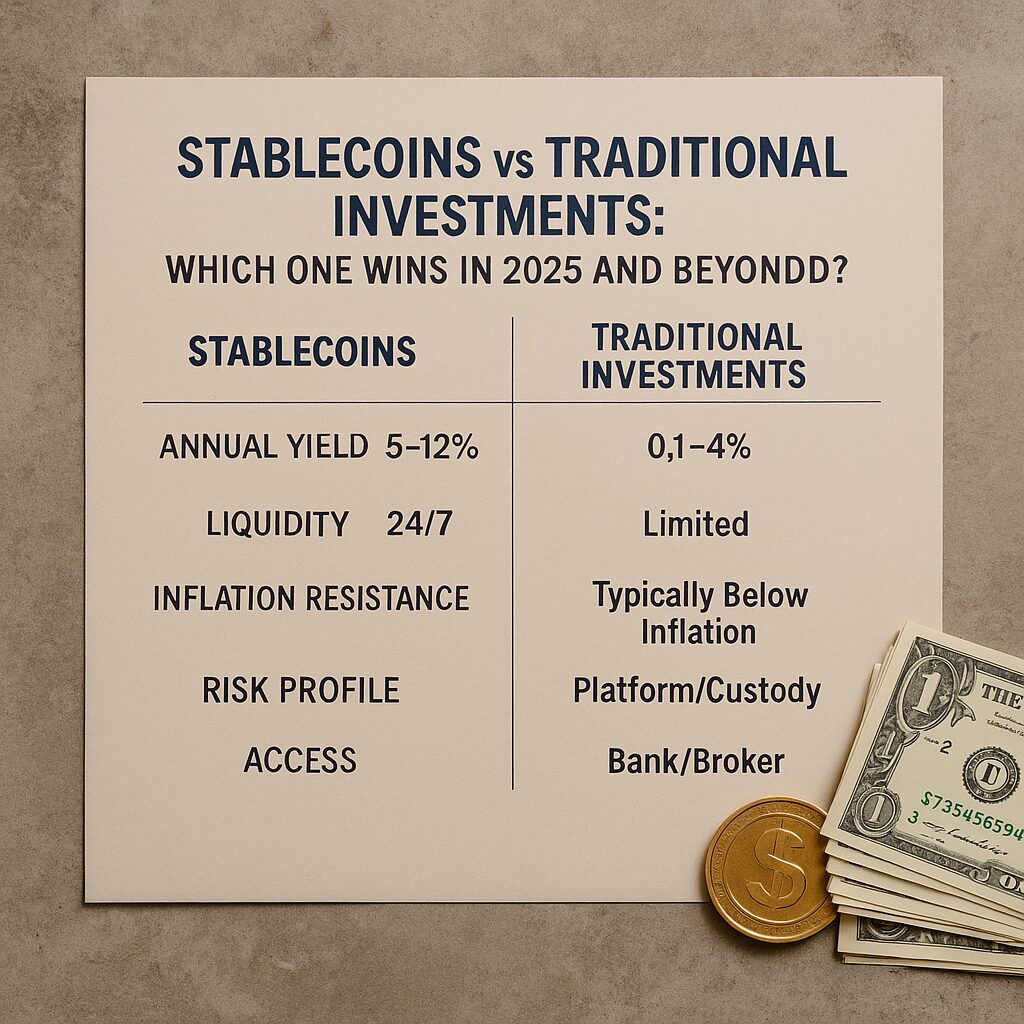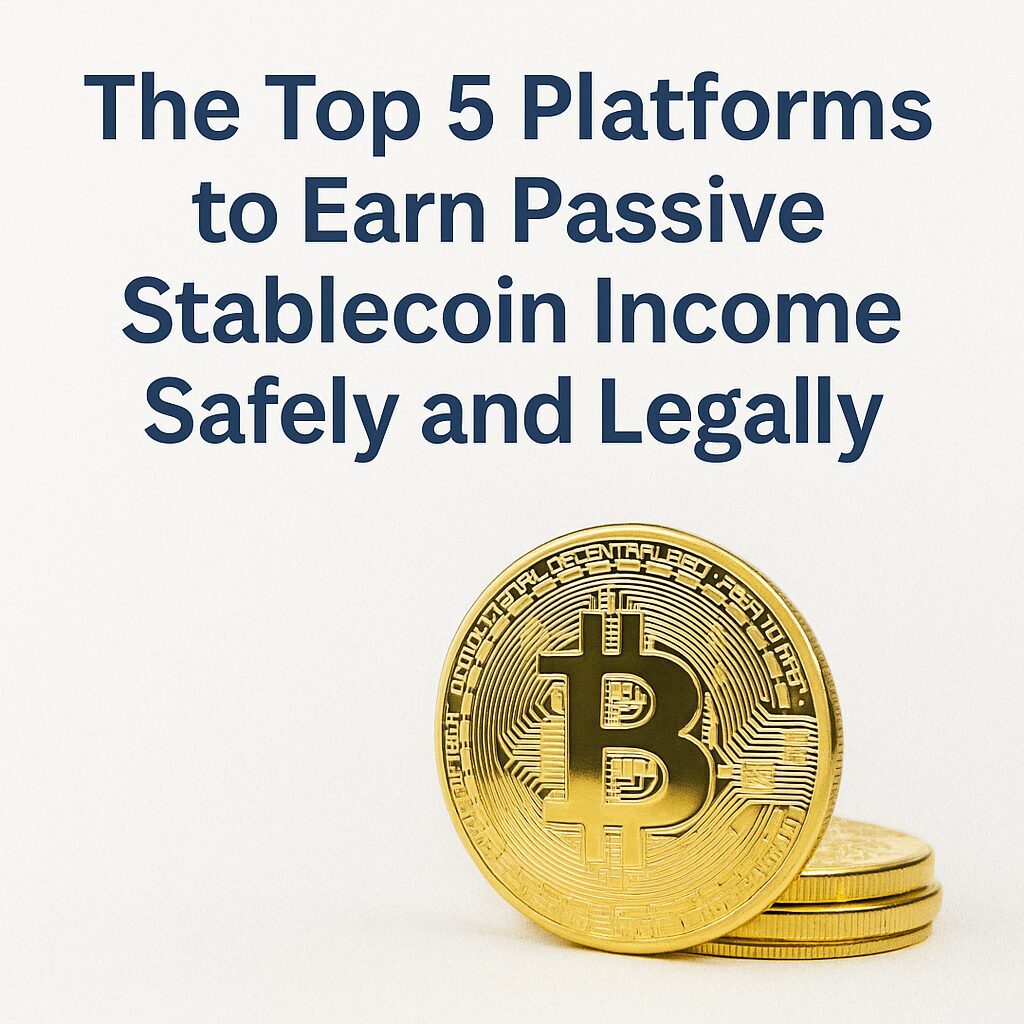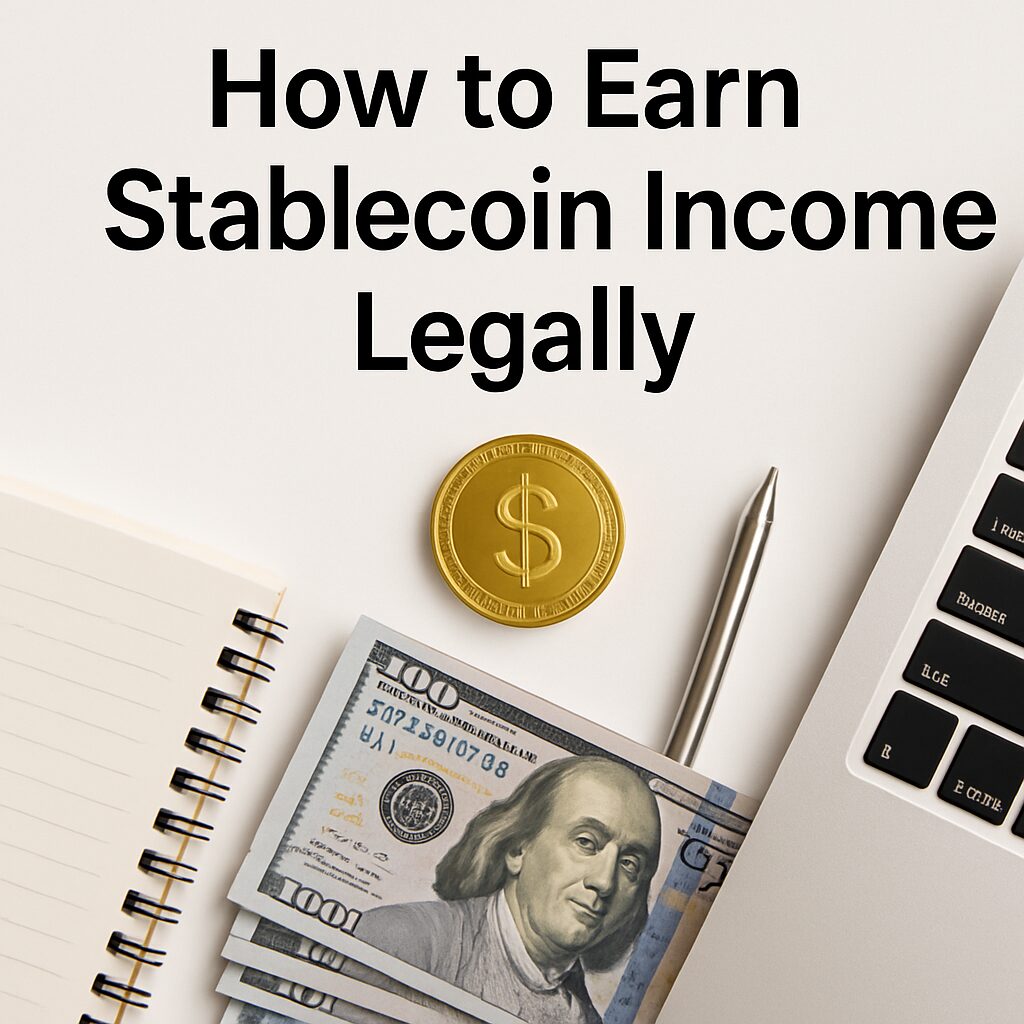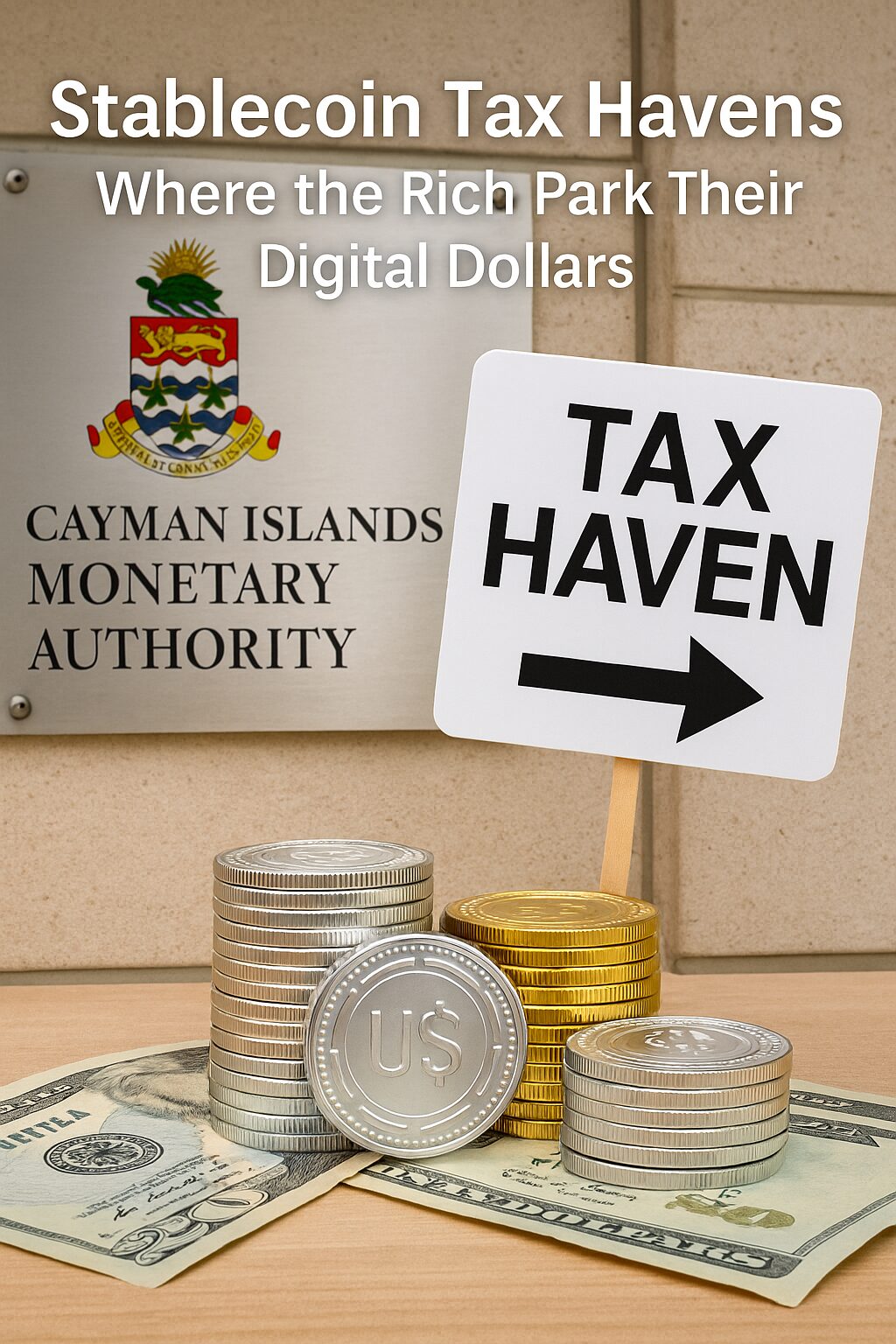Building a portfolio entirely with stablecoins might sound like a radical idea — or even a financial compromise. After all, most investment strategies revolve around growth assets: equities, crypto tokens, real estate, or startup equity. But here’s the hard truth in 202X: volatility has become a liability, and predictable cash flow has become a superpower.
In a world where markets are swinging 10% in a day, currencies are collapsing under inflation, and banking systems are failing to deliver cross-border reliability, stablecoins have emerged not just as tools of convenience — but as instruments of survival.
This guide is not about dipping your toes into DeFi for passive income or holding a few USDC tokens as a hedge. It’s about building an entire personal financial system using stablecoins — one that can:
- Preserve purchasing power across borders,
- Generate consistent, compounding yield,
- Maintain liquidity in any market crash,
- And minimize tax exposure with maximum control.
We’ll show you how to break free from centralized financial risk and design a portfolio that works whether you’re based in Thailand, Texas, or Tunisia.
This is not theory. This is what smart, mobile, global earners are already doing. Digital nomads. Crypto-native operators. Emerging market founders. Offshore asset managers.
You’ll learn:
- The 4 core buckets of a stablecoin-based portfolio
- How to diversify not just assets, but blockchains and risk types
- How to automate rebalancing and income flows
- Which wallets, platforms, and protocols to trust — and why
Let’s be clear: this isn’t about beating the S&P500 or timing the market.
This is about financial resilience, control, and sovereignty — with a portfolio that pays you, protects you, and follows you anywhere in the world.
The Four Pillars of a Stablecoin-Based Portfolio
A stablecoin-only portfolio isn’t just a pile of USDC in a wallet. It’s a multi-layered, purpose-built structure designed to meet real-life needs — from emergency cash to high-yield growth. Every successful portfolio in this space is built on four key components, or “pillars.” Each plays a distinct role and protects you against different types of risk.
1. Liquidity Layer – Immediate Access, Zero Volatility
This is your always-available cash reserve. It’s held in the safest, most liquid format possible: usually pure USDC or USDT inside a non-custodial wallet, or stored in a reputable custodial app like Coinbase or Binance.
- Purpose: Emergency use, spending, fast redeployment.
- Recommended Size: 10%–20% of your total stablecoin holdings.
- Key Tools: MetaMask, Trust Wallet, Coinbase, hardware wallets.
- Strategy Tip: Don’t yield-farm this portion. It’s about access, not returns.
2. Yield Layer – Reliable Passive Income
This is where you park stablecoins to work — generating steady interest. It might be DeFi vaults, CeFi lending, or institutional pools.
- Purpose: Monthly yield, predictable cash flow.
- Recommended Size: 30%–50%.
- Examples: USDC in Aave, DAI in Yearn, USDT in Ledn.
- Strategy Tip: Diversify across 3+ platforms and split by yield type (fixed vs variable).
3. Growth Layer – Higher Risk, Higher Return
This is your experimental capital — where you chase outsized APY with a calculated level of risk. Think of it as your innovation lab.
- Purpose: Maximize upside, accept some volatility.
- Recommended Size: 10%–25%.
- Examples: Curve stable pools, algorithmic yield farms, new-chain strategies.
- Strategy Tip: Cap exposure, rotate frequently, and never reuse private keys.
4. Resilience Layer – Long-Term Safety Net
Think of this as your insurance policy. It’s where you preserve core capital in low-risk environments and prepare for black swan events.
- Purpose: Survival mode during market chaos.
- Recommended Size: 20%–30%.
- Examples: Tokenized T-Bills (like Ondo), real-world asset protocols (Maple, Goldfinch).
- Strategy Tip: Use fully audited platforms with off-chain legal backing.
Each pillar exists for a reason. Skip one, and your system becomes fragile. But combine them intelligently, and you have a decentralized financial machine — one that earns, survives, and adapts.
How to Allocate Across Blockchains and Platforms
A portfolio is only as strong as the infrastructure that supports it. In the stablecoin world, this means choosing the right chains and platforms to operate across — not just for yield, but for security, accessibility, and uptime.
Why Cross-Chain Matters
Many investors mistakenly keep their entire stablecoin position on a single network, like Ethereum. While Ethereum offers robust security and deep liquidity, it’s also expensive and congested. By spreading across multiple chains, you reduce congestion risk, open access to more yield opportunities, and gain faster exits when markets move.
Top Chains for Stablecoin Strategy
Here’s how experienced investors typically divide operations:
- Ethereum Mainnet: Highest security, best for large-value transactions and long-term vaults.
- Polygon: Ultra-low fees, great for auto-compounding strategies and yield aggregators.
- Arbitrum/Optimism: Ideal for mid-sized DeFi activity with moderate fees and strong ecosystem.
- BNB Chain: Useful for niche yield farms and arbitrage plays, though watch for rug risks.
- Solana & Avalanche: Good for fast strategies and newer platforms, but treat as experimental.
Platform Diversification
Don’t just spread across chains — spread across platforms too. Your portfolio should include at least:
- One DeFi lending protocol (e.g., Aave, Compound)
- One vault-based aggregator (e.g., Beefy, Yearn)
- One centralized lender with strong reserves (e.g., Ledn, Nexo)
- One real-world asset protocol (e.g., Maple, Ondo)
Wallet Architecture
Use multiple wallets to isolate risk:
- Hot wallet for active DeFi positions
- Cold wallet for long-term vaults
- Burner wallet for new platforms
- Watch-only wallet for tracking strategies
Make sure all wallets are backed up and secured with 2FA or hardware keys.
Automating Your Stablecoin Cash Flow and Rebalancing
One of the greatest advantages of a stablecoin-based portfolio is the ability to automate almost everything — income, reinvestment, rebalancing, and even withdrawals. When done right, your portfolio becomes a self-running machine, generating passive yield with minimal intervention.
Set-and-Forget Income Strategies
- Auto-Compounding Vaults: Platforms like Beefy and Yearn reinvest earnings continuously.
- Lending Bots: Tools like DeFiSaver or Rari Capital (Fuse) auto-allocate based on yield changes.
- Fixed-Term Rollovers: CeFi platforms can auto-roll fixed deposits as they mature.
Scheduled Rebalancing
- By Frequency (e.g., monthly, quarterly)
- By Threshold (e.g., if a layer deviates by 10%)
- By Platform Risk (e.g., TVL drops, bad audits)
Use tools like Zapper, DeBank, or Zerion to monitor and rebalance visually.
Routing Income
Use smart wallets to:
- Send 20% yield to a spending wallet
- Reinvest 70%
- Save 10% to a safety vault
This keeps your portfolio dynamic and sustainable.
Tax Optimization
Label sub-wallets based on income type (yield, rewards, bonuses) to ease tax reporting.
Automation is not optional — it’s your edge in the global yield game.
How to Protect Your Portfolio From Platform and Regulatory Risk
Even the best yield strategy fails if you don’t manage existential risks.
Platform Risk
- Use audited protocols with open-source code.
- Limit exposure to any single platform to 20–25%.
- Monitor TVL, governance votes, rug risk metrics.
- Withdraw immediately if anything seems off.
CeFi and Custody Risk
- Check proof-of-reserves and insurance status.
- Avoid unregulated offshore entities.
- Prefer platforms with legal recourse.
Regulatory Risk
- Use regulated stablecoins (USDC, USDP).
- Avoid tokens with questionable compliance (e.g., UST, algorithmic models).
- Set up offshore structures or DAOs if managing large capital.
- Stay updated on FATF and OFAC rules.
Build a Risk Matrix
Score each asset or vault:
- Custodial vs non-custodial
- Jurisdiction of service
- Complexity of smart contract
- Recovery options
Then rebalance not just by returns, but by risk score.
Living Off a Stablecoin Portfolio: What It Takes to Go Full-Time
This is the ultimate goal: stablecoin income as your main life support.
Calculate Monthly Expenses in Stable Terms
Example:
- Rent + bills: $1,500
- Food + transport: $1,200
- Buffer (20%): $540
→ Total: ~$3,200/month
Determine Required Capital
Target yield: 8%
Annual need: $3,200 × 12 = $38,400
Capital needed: $38,400 ÷ 0.08 = $480,000
Model also for 5% worst-case yield = $768,000 required.
Cash Flow Mapping
- Stable Yield Bucket
- DeFi APY Bucket
- Speculative Yield
- Spending Wallet
Use Notion, Excel, or crypto dashboards.
Spend Like a Local
- Use crypto debit cards
- Convert via exchanges or P2P
- Pay rent via OTC intermediaries
- Use Wise or Revolut to withdraw
Emergency Planning
Keep 3–6 months of liquidity outside protocols.
Rotate wallets and platforms every 6–12 months.
📌 Coming Up Next
Top 7 Tools to Manage Your Entire Stablecoin Life – Dashboards, Cards, Automations, and Tax Reports
→ In our next post, we’ll show you the exact platforms and apps you can use to live entirely on stablecoins — from portfolio dashboards to spending tools.









